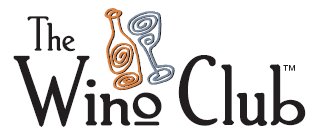I really have been fascinated with Sake lately and the ongoing debate that Sake is more like wine in tasting palette and like beer in the fermenting. This article from The Daily Yomuri Online explains how the fermenting is getting more and more wine-like:
Three sake brewers are using old wine barrels to age sake in attempt to stop a decline in what is regarded as the national tipple.
Sake kept in wine barrels carries slight hints of white wine in its flavor and brewers hope it will prove to be more pleasant to the palate. Although the amount produced by this unorthodox method is still small, some kinds have sold out, and its popularity is growing.
The brewers also are targeting the overseas market, riding an international boom in Japanese cuisine.
Other brewers plan to use wine barrels to age their products.
The barrels being used are of French oak and were used for making white wine by Katsunuma Winery Co, one of the leading wineries in Katsunumacho, the center of Koshu (Yamanashi) wine production in Yamanashi Prefecture.
Gochouda Brewery Co. in Ureshino, Saga Prefecture, started storing sake in the barrels in autumn 2006. Koichi Hasegawa, 52, president of Hasegawasaketen store in Koto Ward, Tokyo, acted as a mediator between the winery and the sake maker. Hasegawa, who also is a client of Katsunuma Winery, thought the mild scent of Koshu grapes would work well in sake.
Hishitomo Brewery Co. of Shimosuwamachi, Nagano Prefecture, and Sumikawa Brewery Co. of Hagi, Yamaguchi Prefecture, followed suit in April 2007.
Wine barrels are usually thrown out after five or six years of use. The sake makers select barrels used for three or four years and keep their top-quality sake in the barrels for several months.
The sake makers are still working through trial and error as the taste differs slightly according to the season and barrel conditions. "The barrels have worked well with the sake, making the most of the delicate flavors," Hasegawa said.
Japan Airlines started serving one of the wine-barrel sake brands in its first class cabins in June 2007. It has proven popular with foreign passengers, according to the airline. The sake makers plan to export the sake to the United States starting later this year with shipments to Britain and Taiwan sometime later.
The sake makers hope the sake also will go over well with younger Japanese consumers, who are more accustomed to drinking wine than older customers.
"If sake loses popularity, Japan's alcohol culture, including wine, won't grow," said Shigeyuki Hirayama, executive managing director at Katsunuma Winery Co.
For the full article read here.






